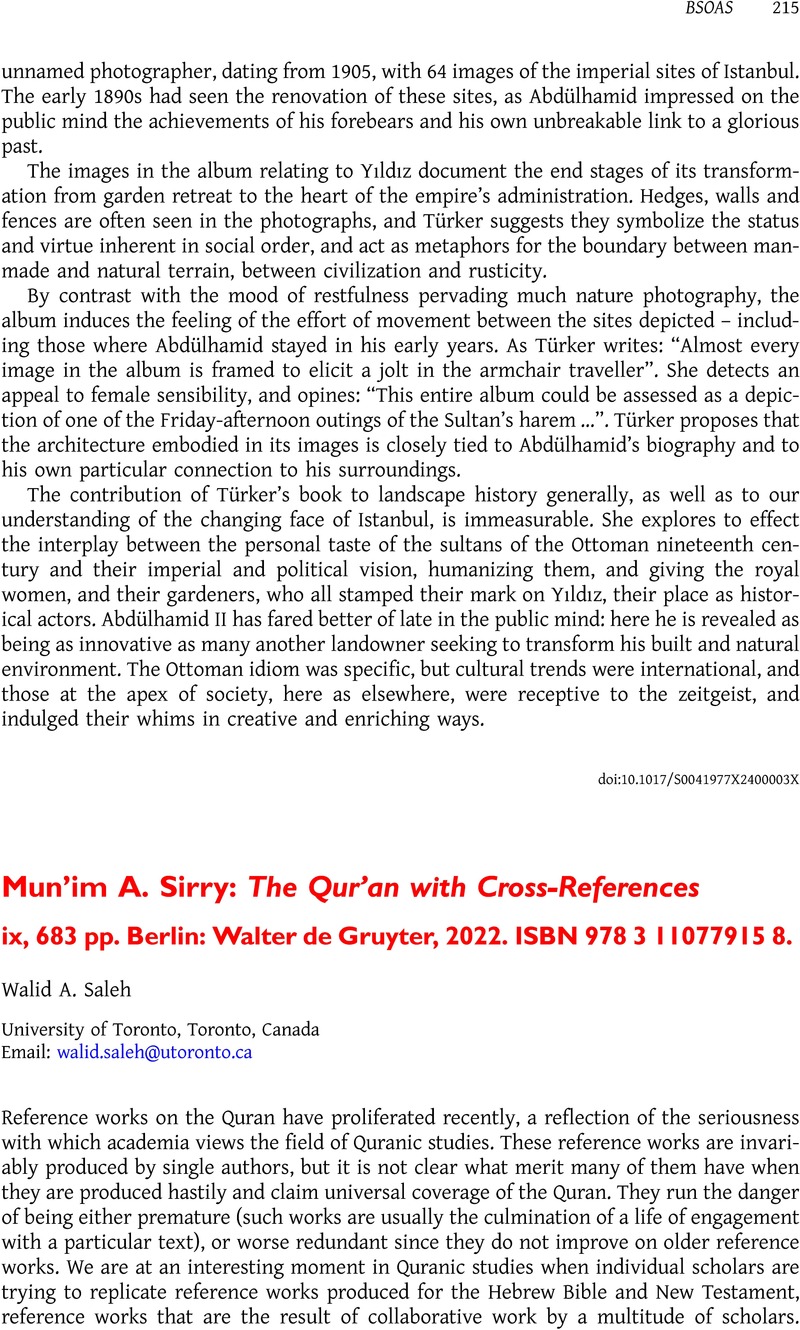No CrossRef data available.
Article contents
Mun'im A. Sirry: The Qur'an with Cross-References ix, 683 pp. Berlin: Walter de Gruyter, 2022. ISBN 978 3 11077915 8.
Review products
Mun'im A. Sirry: The Qur'an with Cross-References ix, 683 pp. Berlin: Walter de Gruyter, 2022. ISBN 978 3 11077915 8.
Published online by Cambridge University Press: 28 February 2024
Abstract
An abstract is not available for this content so a preview has been provided. Please use the Get access link above for information on how to access this content.

- Type
- Reviews
- Information
- Copyright
- Copyright © The Author(s), 2024. Published by Cambridge University Press on behalf of SOAS University of London



